TL;DR
first level title
1. Meta background public chain, privacy public chain, modular blockchain and Layer2 public chain are more popular;
2. The new public chain is eye-catching in terms of scalability, with TPS ranging from thousands to tens of thousands;
3. The ecological development of the new public chain is still in the early stage, and the number of ecological users does not yet have a competitive advantage, but there are certain Alpha opportunities;
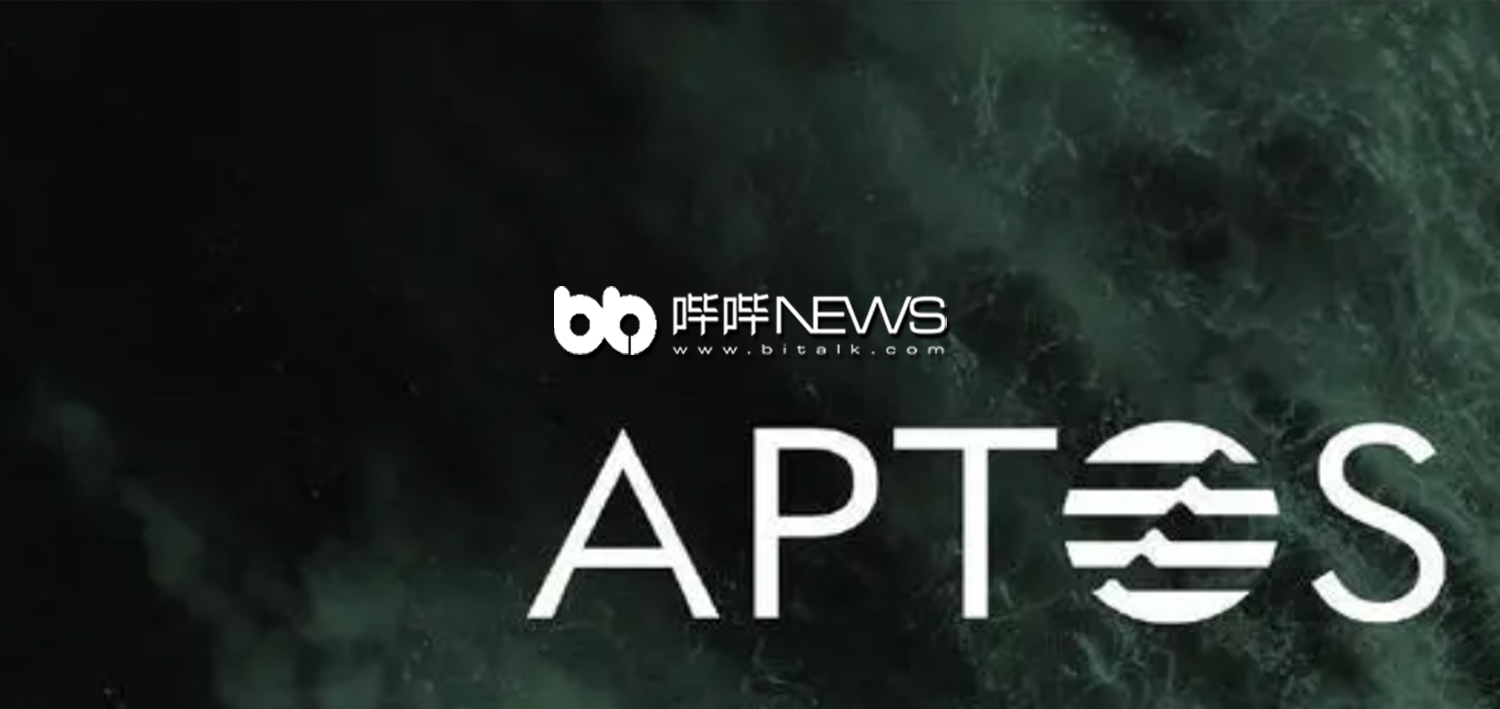
4. Modular blockchain is an important trend in the development of public chains.
The public chain is an important part of the Web3 infrastructure. New public chains continue to emerge, aiming to provide developers and users with a better Web3 experience, and trying to break the "impossible triangle" of the blockchain.
The "impossible triangle" of the blockchain refers to the fact that security, decentralization, and scalability cannot be achieved at the same time. Through technological innovation and blockchain iteration, the new public chain is striving to achieve both.
Among the new public chains, the most popular are the Meta background public chain represented by Aptos, the Layer 2 new public chain represented by zkSync, the privacy public chain represented by Aleo, and the modular blockchain represented by Celestia .
At present, the new public chain has obvious deficiencies in terms of ecological development, token value capture ability, and the status of the public chain structure, which need further observation. Now that the new public chain is experiencing the growth process of public chains such as Solana and Avalanche, we can look forward to the Alpha benefits behind it and ambush ecological opportunities in advance.
first level title
Development Status of New Public Chain
The public chain track has always been full of topics. The emergence of new public chains not only provides new solutions for decentralization, scalability, security, etc., but also brings new concerns to the encryption community and investment institutions.
The new public chain focuses on high performance, high scalability, EVM compatibility, privacy protection, etc., and has many innovations at the technical level. However, the ecology of most new public chains has not yet developed. Ecological development, actual network performance, and user volume to be observed.
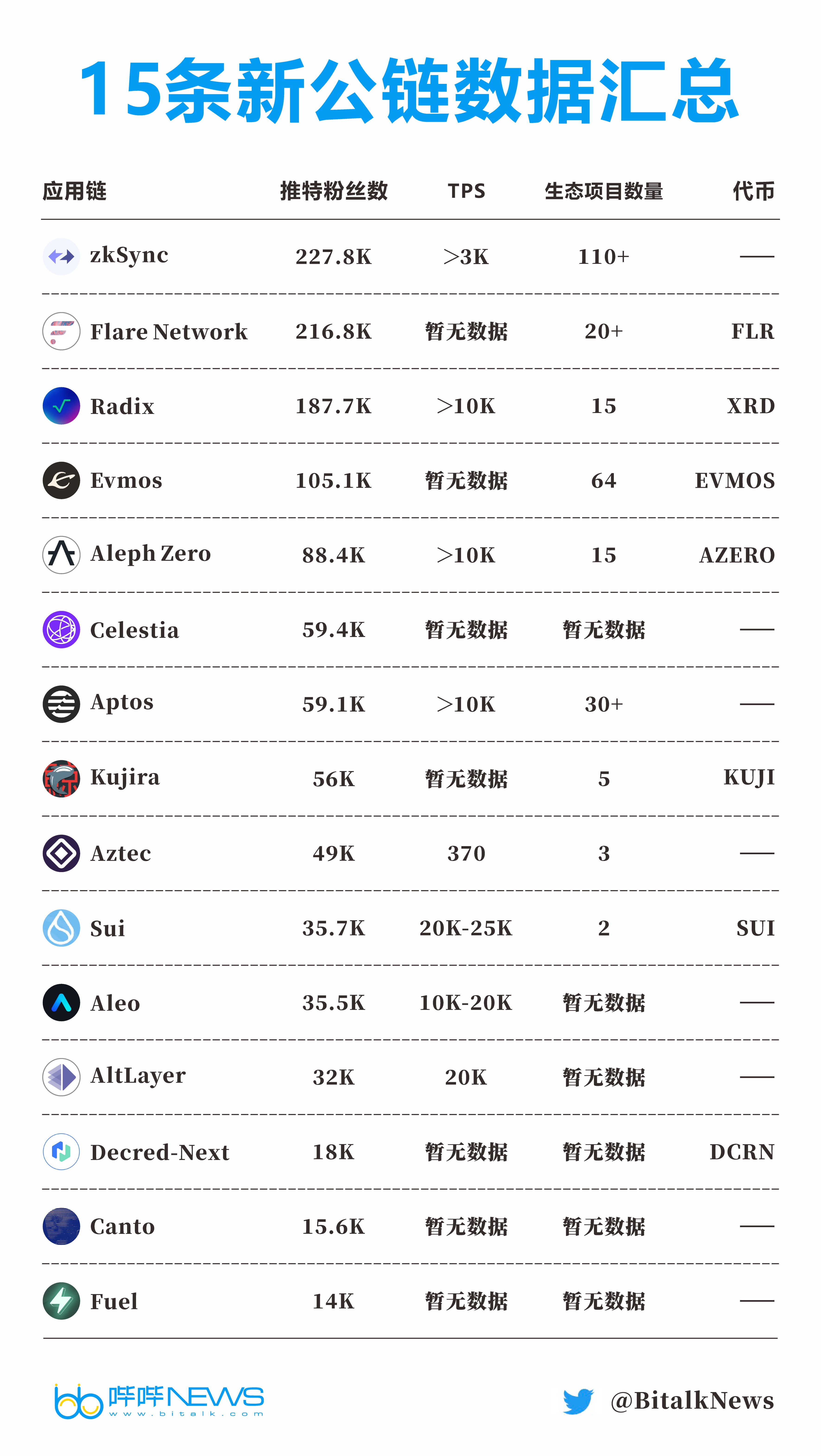
(Part of the new public chain data)
secondary title
(1) The Meta background public chain and the new Layer2 public chain are leading the way
From the perspectives of ecological development, financing, development progress, etc., the Meta background public chain and the new Layer2 public chain have a first-mover advantage in the competition of new public chains.
1. Meta background public chain
Meta background public chains include Aptos, Sui and Linera, all of which were founded by former Meta engineers and use the Move programming language. It is worth mentioning that the Move programming language is a smart contract programming language developed and designed by Meta, which was previously used in the development of its stable currency project Libra.
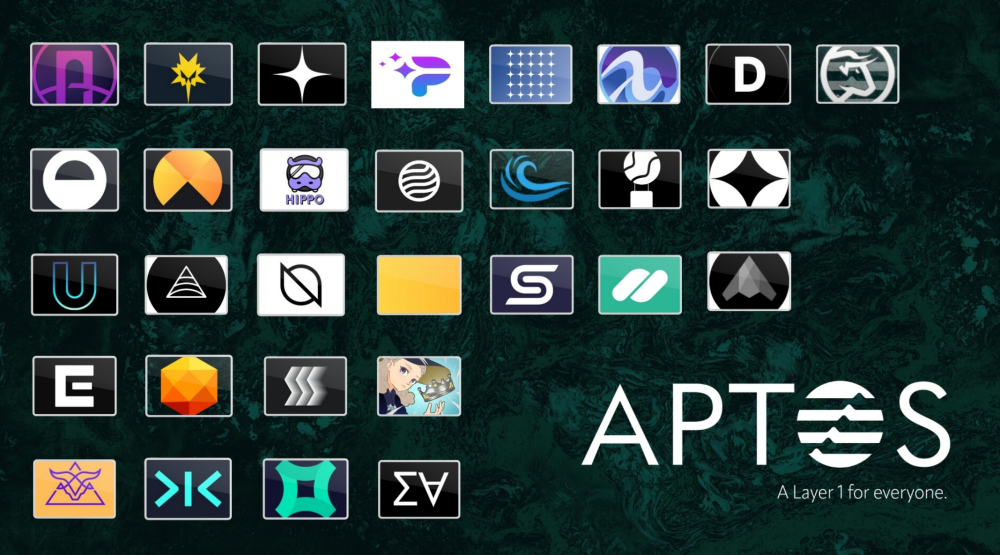
Among the three public chains, Aptos has the fastest development and ecological progress. Aptos is a high-performance public chain focusing on security, scalability and upgradeability. Aptos launched the Incentive Testnet (Phase 2) on July 1, and announced 30 ecological projects in July. The project types include DEX, wallet, liquidity agreement, NFT market, etc. The ecology has begun to take shape.
The development of Aptos has attracted the attention of investment institutions. Aptos has completed two rounds of large-scale financing this year, with a total of $350 million. Investors include FTX Ventures, Jump Crypto, a16z, and Tiger Global.
Sui is the only public chain that issues Token among the three public chains. The functions of SUI include pledge/protection of the network, transaction fees, governance, and network circulation assets. Node pledge and Token empowerment are relatively complete among the three public chains.
2. New Layer2 public chain
Among the Layer 2 public chains, Arbitrum and Optimism using Optimistic Rollup have first-mover advantages. Both the development progress and ecological development are faster than Layer 2 public chains such as zkSync and StarkNet. With the ecological expansion of zkSync and StarkNet, the attention of the two in the Layer 2 track has increased, and they have become the most complete ecology among the new public chains.
What deserves attention in the new Layer 2 public chain is the zkEVM chain. Both zkSync and Scroll use zkEVM technology. zkEVM not only ensures extremely high security, but is also compatible with EVM, reducing the difficulty of migrating Ethereum ecological projects.
secondary title
(2) Most of the new public chains are still in the early stages of development
The development progress of most new public chains is still in the core technology development and test network stage, and the number of network node pledges and users is not much. The official website of the public chain provides relatively rich use cases, providing developers with a reference for application construction and migration.
secondary title
(3) Popular directions: privacy, modular blockchain, expansion, Cosmos ecology, public chain using the Move programming language
Among the 30 new public chains compiled, the public chains mainly focus on the following directions: privacy, modular blockchain, expansion, Cosmos-based public chains, and public chains using the Move programming language.
1. Privacy public chain
There are 5 new privacy public chains organized: Aleph Zero, Aztec, Aleo, Iron Fish, Anoma. Through technologies such as zero-knowledge proof, the privacy public chain can protect users' transactions, wallets and other information, and improve users' Web3 application experience.
Among these privacy public chains, Aztec, Aleo, and Iron Fish are highly discussed. Aztec is a Layer 2 privacy public chain, which is unique in the Layer 2 track. Both Aleo and Iron Fish are in a16z's investment portfolio and are the leaders in the privacy track.
2. Modular blockchain

Modular blockchain refers to the separation of the three components of the blockchain, the execution layer, the consensus layer, and the data availability layer, and each layer is optimized.
This diagram of the modular blockchain contains many new public chains, the execution layer is Layer2 network, the new public chains of the consensus layer include Aptos, Sui, Celestia, Evmos, and the data availability layer includes Polygon, a data availability solution launched by Polygon Avail.
Among the modular blockchains, Celestia is the most discussed one. Celestia is the first modular blockchain network, which distinguishes different modules of the consensus layer and the execution layer, allowing developers to choose the execution environment to develop and deploy Dapps.
3. Expansion
Expansion is an inescapable topic for public chains. The new public chain emphasizes its expansion capabilities during development and testing, including high TPS, low gas fees, and short transaction confirmation times. Among the new public chains that focus on capacity expansion, the most popular ones are Meta background public chains, Cosmos-based public chains, Layer 2 and modular blockchains.
4. Cosmos ecology
The Cosmos ecology is a part of the public chain ecology that cannot be ignored this year. Cosmos is committed to realizing the horizontal expansion of Layer0, providing modular, pluggable solutions and better scalability. Developers generally use the Cosmos SDK to build a public chain in the Cosmos ecosystem, and use the Cosmos ecosystem to improve the scalability of the public chain.
Most of the new public chains deployed in the Cosmos ecosystem are DeFi public chains. For example, the Kujira ecosystem has an order book trading platform and a lending platform, and Canto has trading and lending functions.
5. Public chain using Move programming language
At the same time as the popularity of the Meta background public chain is rising, discussions on the Move programming language are also rising, and the frequency of use of the Move programming language may increase. It is expected to see more public chains using the Move programming language in the future.
first level title
The new public chain provides solutions for security, scalability, and compatibility, and strives to challenge the "impossible triangle" of the blockchain at the technical level.

(The "impossible triangle" of blockchain)
1. Security
1. Security
The new public chain proposes innovative solutions in terms of technology and node pledge to improve the security of the new public chain.
Take Aptos and Sui as examples. Both Aptos and Sui use the Move programming language. According to the information, the Move programming language is more secure and reliable than the Solidity programming language.
Both Aptos and Sui rely on network validators to maintain network security. The two ensure the security and stability of the network from two aspects of consensus mechanism and node token pledge.
The Aptos team has carried out four iterations of its consensus mechanism - Byzantine Fault Tolerance (BFT), which has improved the transaction confirmation speed and the stability of this blockchain, and can still guarantee stable operation when one-third of the verification nodes fail.
Sui is the only coin-issued project in the Meta background public chain. In addition to using Byzantine Fault Tolerance (BFT), Sui motivates nodes through SUI, and verification nodes improve the overall stability of the network by pledging SUI in the network.
2. Scalability
The most specific indicator of scalability is the TPS of the public chain. Ethereum is currently suffering from scalability issues and will improve its scalability through merging and sharding.
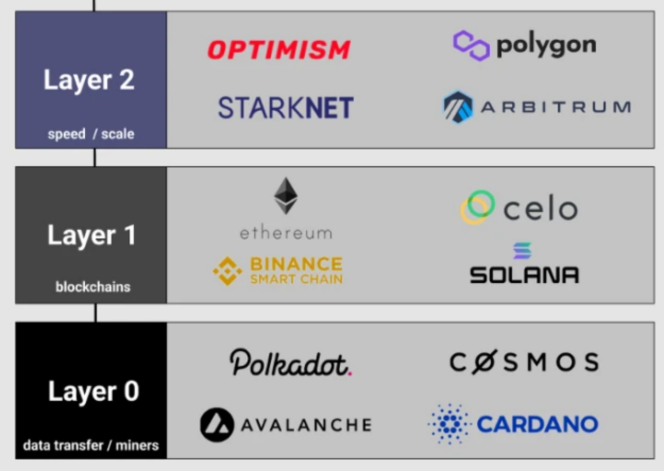
The solutions given by the new public chain include Rollup, building a new public chain based on high-performance Layer 0 public chains (such as Cosmos, Cardano), modular blockchain, and technical expansion.
The highest TPS of multiple public chains exceeds 10,000, such as Aptos (above 10,000), privacy public chain Aleo (10,000-20,000), and Ethereum expansion project AltLayer.
3. Compatibility
Multi-chain deployment has become an important trend in the blockchain industry. The deployment of applications on the Ethereum chain on other public chains has become the norm. The new public chain attaches great importance to compatibility and interoperability.
In the new Layer 2 public chain, both zkSync and Scroll adopt zkEVM technology, which is compatible with EVM while improving Layer 2 network security, lowering the threshold for the migration of Ethereum ecological applications and expanding the ecological territory.
The expansion projects Milkomeda and AltLayer also have unique designs for virtual machine compatibility.
AltLayer is an Ethereum expansion project, designed as a multi-chain and multi-VM modular and pluggable framework, providing a migration solution for applications on multiple chains.
first level title
Privacy may become a new hot track
In the Web3 era, users' demands for privacy protection, decentralized data storage, DID and other applications that help improve data security and privacy on the user chain are gradually increasing. In the past two years, the popularity of the privacy track has gradually increased, and it is expected to become a new popular track.
There are 5 new privacy public chains: Aleph Zero, Aztec, Aleo, Iron Fish, Anoma.
Among them, Aztec is the only Layer 2 privacy public chain, and Aleo and Iron Fish have developed for a long time and have relatively unique projects.
This article will analyze the development trend of privacy track projects by introducing the advantages of these three projects.
1. Advantages of Aztec:
①Layer2 expansion, with good scalability;
②Adopt zkSNARK zero-knowledge proof technology, strong privacy protection technology;
③It has been integrated with the Ethereum ecological project, and realizes asset cross-chain through Aztec Connect.
2. Advantages of Aleo:
① Use zero-knowledge proof technology to improve security and privacy protection capabilities;
②Provide tools for writing zero-knowledge proof applications: Aleo Studio, Aleo Package Manager, lowering the threshold and shortening the development cycle;
③It has been developed in the privacy track for a long time, and has received support from a16z and Softbank.
3. Advantages of Iron Fish:
Each address on the chain is equipped with an additional "readable key", which protects privacy without compromising the accessibility of transactions on the chain, and at the same time solves the supervision problem of the privacy public chain.
From the above three projects, we can see four development trends of the privacy track:
①Privacy public chains tend to use zero-knowledge proof technology, which can not only protect user privacy, but also improve network security;
②Privacy public chain will focus on improving capacity expansion and interaction with other application chains;
④ Solve regulatory issues while protecting privacy.
first level title
Development Trend of New Public Chain: Modular Blockchain
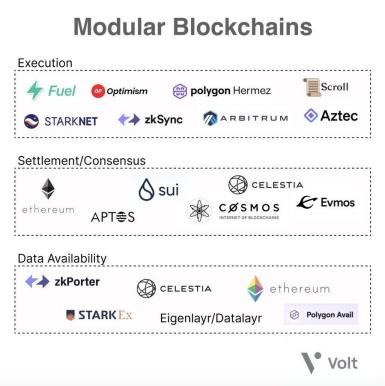
Modular blockchain refers to the separation of the three components of the blockchain, the execution layer, the consensus layer, and the data availability layer, and optimizes each layer to achieve the effect that the sum of the parts is greater than the whole, and solves the problem of a single block. The problems caused by the three-level tasks of the chain alone help to break the "impossible triangle" of the blockchain.
Citing the modular blockchain diagram produced by Volt Capital, there are new public chains distributed in the execution layer, consensus layer and data availability layer. The execution layer includes Fuel, Scroll, etc., the consensus layer includes Celestia, Aptos, etc., and the data availability layer includes Polygon Avail, this article will introduce the representative items of each level.
1. Execution layer
The execution layer is where users interact, and the execution layer is where transactions are processed. The modular blockchain that implements a dedicated layer focuses on increasing the speed of processing transactions and enhancing the user's transaction experience. Therefore, most of the modular blockchains at this layer are expansion projects, and the representative project is the Ethereum Layer 2 expansion project, which improves TPS and reduces Gas fees through Rollup technology.
Taking zkSync as an example, zkSync adopts zkRollup expansion technology, which can process more than 3000 transactions per second (TPS>3000), and the gas fee is less than 1% of the Ethereum mainnet.
Use zkRollup to improve the security of its transactions, and Layer1 to Layer2 do not need the seven-day challenge period of the Optimistic Rollup expansion plan.
2. Consensus layer
The consensus layer downloads and executes the content of the block through the full node network to reach a consensus on the validity of the state transition, thereby providing ordering and finality.
The consensus mechanism is the foundation and core of the blockchain. The consensus mechanism determines how the participating nodes agree on some specific data. This is the core content of the public chain. A public chain must confirm its consensus mechanism to operate normally.
Therefore, the consensus layer component is a public chain with a consensus mechanism, of which Celestia is the first modular blockchain.
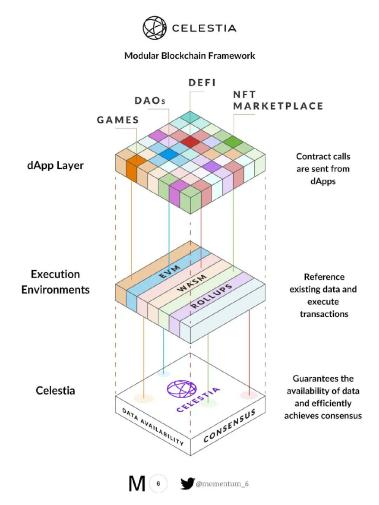
The highlight of Celestia is that it only verifies the consensus and data availability, and does not participate in transaction execution, and the proof of transaction validity is completed on the Rollup client. Celestia separates the core part, the execution environment and the dApp layer to minimize the amount of data processing, thereby achieving network expansion.
3. Data availability layer
Whether the data required by the data availability layer to verify whether the state transition is valid is uploaded and stored, which is a common problem in the blockchain impossible triangle. Malicious block producers can choose to only publish block headers and retain some or all of the corresponding data. Prevents full nodes from validating and identifying invalid transactions, resulting in proof-of-failure.
The current data availability proof technology can effectively solve this problem, which allows customers to efficiently check whether all the data of the block has been published by downloading only a small part of the block. With error-correcting codes, block producers only need 50% of the data to make a block 100% available. At the same time, in order to forge 1% of the data, malicious block producers must forge 50% of the data, which increases the cost of doing evil.
Blockchain solutions that focus on data availability include Celestia, zkPorter, Polygon Avail, etc.
Take Polygon Avail, a solution that allows developers to access blockchain data off-chain, meaning they don’t need to constantly check data from the network for applications deployed on Polygon. Application clients only need to query the data relevant to their application without downloading the entire data block.
4. Splitting and combining of modular blockchains
The modular blockchain provides the idea of splitting and combining the three levels of the blockchain. Splitting means that each public chain can focus on a certain level, without taking into account the three levels and reducing the efficiency of the public chain. From the analysis of the above three levels, we can see that there are currently high-quality solutions at each level.
Execution layer: Rollup
Consensus layer: Celestia and similar solutions
first level title
Token empowerment
Token empowerment
Token functions include: mining, node pledge, maintenance of network stability, transaction fees, network circulation assets and participation in governance. Node pledge, transaction fee and governance functions are more functions of these public chain tokens.
secondary title
(1) Token Function
1. Node pledge
Node staking refers to the operation of token holders to use their tokens to participate in verifying transactions and validating the blockchain network. As a verification node of the blockchain, staking more tokens will help improve the stability of the network.
In order to motivate the verification nodes, the blockchain network provides token rewards for the verification nodes, forming a positive cycle of the network. New public chains such as Sui and Evmos all have this function.
2. Transaction fees
Transaction fees refer to token holders using tokens to pay fees in the network. For example, users on the Evmos chain use EVMOS tokens to pay gas fees during transactions.
3. Governance
Among the 11 public chains that have confirmed the issuance of tokens, the tokens of 7 public chains have governance functions. Taking Evmos, which has many token functions, as an example, EVMOS holders can submit proposals and vote on on-chain asset management.
secondary title
(2) At present, token empowerment is not strong yet, and needs to be observed
At present, most of the tokens of the new public chain have not yet circulated in its ecology, and the functions of tokens are limited to node pledge, mining, governance, etc.
At this stage, users using the new public chain with token incentive function are more inclined to obtain token rewards through node pledge and mining. After the token is listed, it is expected that the selling pressure will be greater, and the value capture ability of the token may be weak.
However, the popularity of the new public chain is high at present, and we can look forward to the performance of the new public chain tokens in the future.
first level title
Overall evaluation: The new public chain provides innovative solutions to break the "impossible triangle" of the blockchain, and the ecological development remains to be seen
The new public chain provides high-quality solutions in terms of security, compatibility, and scalability. The emergence of modular blockchains creates conditions for improving blockchain performance and breaking the "impossible triangle" of blockchains.
At present, the defects of the new public chain are also obvious. The number of users and the number of ecological projects are still relatively small, the ability to capture the value of tokens is relatively weak, and the competitiveness in the public chain track is still relatively weak. It cannot compete with Solana, Avalanche, etc. The rising new public chain rivals.
1. Technical innovations: Move programming language, modular blockchain, zkEVM
The more eye-catching technological innovations in the new public chain are the Move programming language, modular blockchain, and zkEVM.
Compared with the Solidity programming language, the Move programming language is safer and reduces the risk of code vulnerabilities. Its verifier Move Prover allows verifiers to quickly run test codes in a few minutes, speeding up developers to write code and run it online.
The modular blockchain focuses on specific modules of the blockchain, and the development is more targeted. Focusing on one of the modules reduces the amount of data processed by the blockchain, provides scalability, and has strong expansion capabilities. Blockchain composability provides solutions.
While ensuring the security of expansion, zkEVM makes up for the shortcomings of zkRollup in compatibility with EVM, combining security, scalability and EVM compatibility.
2. New public chain ecology: rich in categories but small in number
Among the 30 public chains counted, the ecological project information of half of the public chains cannot be queried, and most public chains are still in the early stage of ecology.
Take Aptos as an example. Aptos is one of the most popular new public chains. Many projects in the Aptos ecosystem are still in the testnet and development stages. Some applications have less than 1,000 Twitter followers. Currently, only wallets and DEXs can interact.
Although the number of applications and user levels are still unable to compete in the public chain track, the new public chain ecological application category is relatively rich, including mainstream Dapp types such as wallets, DEXs, liquidity protocols, NFTs, and lending.
3. Alpha income behind the new public chain
Alpha income means that the asset investment strategy mainly relies on the active management ability of the manager to obtain the absolute income of the market, and does not fluctuate with the market.
At present, the upsurge caused by the new public chain is independent of the overall performance of the market. Leading investment banks such as a16z, Paradigm, and Sequoia Capital have seized the new public chain in advance and ambushed the Alpha opportunity of the new public chain in advance.
The new public chain has a high-quality technical background and high user participation enthusiasm, which brings high investment expectations for the project.
In 2021, tokens of high-performance public chains such as Solana, Avalanche, and Fantom will have excellent performance (SOL has an annual increase of 102 times, AVAX has an annual increase of 125 times, and FTM has an annual increase of 138 times), providing investors with new public chains Reference for Alpha earnings.